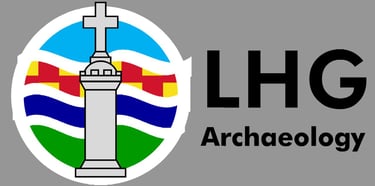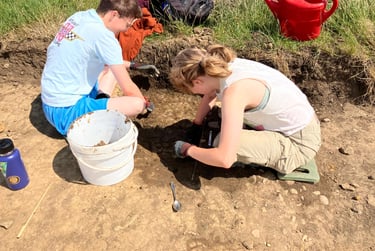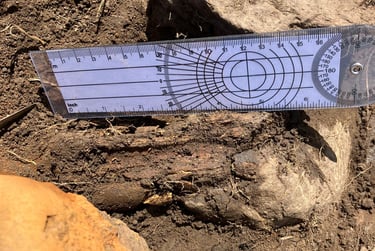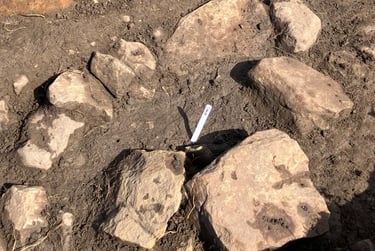Hunting Hall Archaeology Blog
A daily account of our Hunting Hall dig.


17th June 2025 : Dig Diary Day 16
TRENCH 8
We have come through the drains, which were not cut very wide nor very deeply below the placement of stones or the drain tiles. This means, fortunately, that they have not disturbed much of the archaeological deposits around or underneath. Both of the drains seem to have gone through a homogeneous and thick layer of sterile clay — this is perplexing us somewhat, as the homogeneity and absence of any organic material implies that it was deposited by flowing water. Were it a stagnant pond, there would presumably be much more of an organic content through time. Was this possibly deposited in an episode of extreme rainfall ? It overlies a lovely organic layer, in which we are recovering bone and wood. The stones here are deliberately arranged, too. At the moment, we can only say that these deposits are younger than the basal levels we encountered last year, which provided us with a copious quantity of cattle bone, but younger or contemporary with the quern and its associated pottery which might be Anglo-Saxon. Once we have exposed the features and stones properly, we shall get into sectioning the features, and thereafter we can begin our plunge into the deeper and wetter deposits below.
TRENCH 10
The 'cleaning' of the trench is almost complete. We were able to begin sectioning some features, one of which was a pit on the northern extremity of the trench. It provided little evidence, so we have no idea of what its function might have been. The pit did resolve itself into a deeper slot in the centre, so it may be a posthole, albeit the organic content of the fill was not significant and therefore does not agree with a postulate that a post dissolved in situ. The palisade trench continues to be excavated, but at its northern margin some large cattle bone was encountered. Moreover, it has emerged that we have two large concentric features opposite one another at either side of the palisade. It remains to be determined what their function may be, or if they are even associated with the palisade, but we are entertaining the premise that they are and define this structure with potential pits or upright posts. We shall begin excavating those tomorrow.
More concentric stone arrangements are emerging in the central and southern half of the trench. So many circular stone arrangements is a puzzling phenomenon, so we are keen to get into these as well. We may have to entertain hypotheses of some industrial function, or that they may not belong to the Iron Age phase of occupation. Whatever they are, we move towards a resolution soon, as we are prepared in all areas to begin sectioning and the finer work of archaeological excavation.






